Text
Hey,
I appreciate your science-based approach to interpretation! The hands on nature of actually learning what is around you without the act of actually seeing specific animals is a great skill to have. I also think your approach on sampling and learning through first hand exploration is a take that I have not seen often in other peoples blogs. This truly is the most direct way to interpret nature from its truest form, especially in a dissection setting. Through doing this, you can share fascinating information with others that do not want to take this approach themselves, granting others with very unique information. Your focus on nature conservation and presenting others with transferable skills to better sustainable practices is a great way to use your knowledge to help our world. I also respected how you mentioned delivering information in an accessible way, and through executing the hands-on part on your own time and relaying your findings to others you achieve this! I connected to your scientific approach, as I feel this is similar to the way I formulate my interpretations as well. I am very interested on your focus on animal tracks and details in the environment, I certainly would enjoy listening to you nature interpretation!
Thank you for sharing,
Alleeya
Final Post
Hey everyone, can't believe we're already at the end of the road, it feels like I just posted my first post yesterday!
This post is supposed to be all about us, and everything we've learned over the course. It's about how we ourselves would conduct ourselves as nature interpreters.
As a nature interpreter, my personal ethic would be deeply rooted in respect for the environment, and at my core, I wish to promote that I have an unwavering dedication to accuracy and honesty in interpretation, in connection to science.
The role of a nature interpreter means that we have a responsibility to be accurate to the most recent information, while also maintaining the integrity of the natural environmental narrative, which is extremely important when describing and presenting natural history (Beck et al., 2018). There are a lot of responsibilities involved in making sure the interpretation is both accurate and engaging. Therefore, as a nature interpreter, my primary responsibility is to convey accurate information about the natural world in an engaging and accessible manner, helping others develop a deeper understanding and appreciation for biodiversity and ecological processes.
When trying to keep interpretation accurate, in my thoughts, that requires an understanding of, and a connection to science. However, science and interpretation have a tumultuous relationship (Wals et al., 2014). What this means, is that as both a scientist and a nature interpreter, my responsibilities are going to build up between the two, in order to provide the best experience to those I’m teaching. In my eyes, I think my role should be to not only providing information but also to encourage individuals to take meaningful action for conservation. This might involve promoting sustainable behaviors, supporting conservation initiatives, or advocating for environmental policies that protect natural resources. It can also mean encouraging individuals to participate in citizen science projects, support local conservation initiatives, in order to promote support for the environment.
Me personally as an individual, I think the best approach for myself would be a combination of science and nature interpretation. I think an approach that involves collection, sampling, and dissection, all while explaining the importance of what we’re collecting. I also think that something like learning about tracking animals is the perfect way to combine ecological science and nature interpretation.
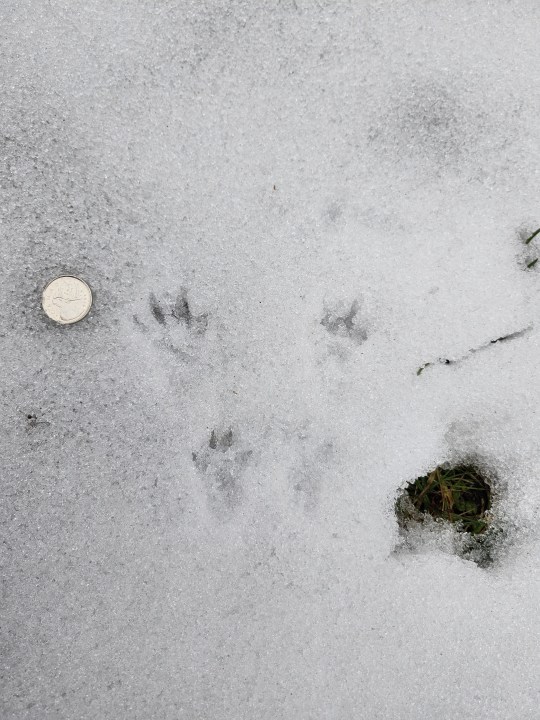
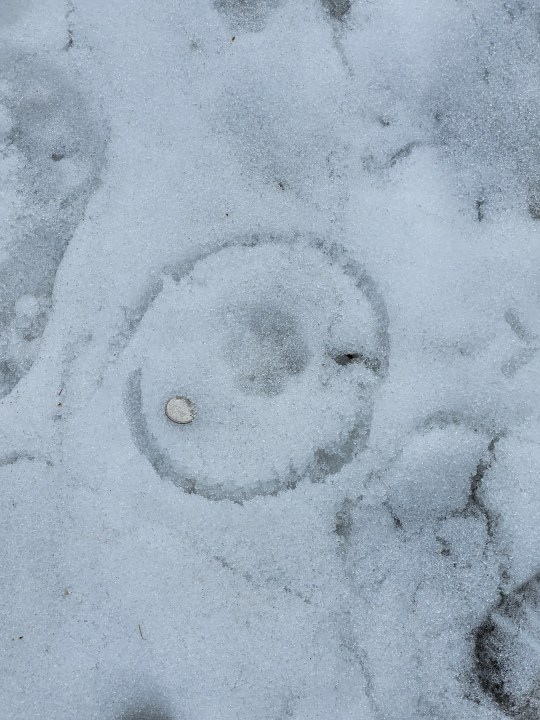
Tracks from the class trip we took. Left is a photo of squirrel tracks, right is a possible coyote track!
Observing animal tracks is a long studied tradition, that has remained a consistent practice for a very long time. It requires a deep familiarity with the land around you, and a understanding of the species that live alongside you. I recently had the chance to learn about it a little bit in one of my classes, and one of the biggest lessons I learned was that I needed to get way more familiar with my surroundings, because you can find so many things if you just look hard enough.
In conclusion, my approach to nature interpretation would be to integrate it with science, because that’s what I know best.
References:
Beck, L., Cable, T. T., & Knudson, D. M. (2018). Interpreting cultural and natural heritage :for a better world. Sagamore Venture.
Wals, A. E. J., Brody, M., Dillon, J., & Stevenson, R. B. (2014). Science education. Convergence between science and environmental education. Science (American Association for the Advancement of Science), 344(6184), 583–584. https://doi.org/10.1126/science.1250515
4 notes
·
View notes
Text
Hi!
Thank you for sharing your experience of self discovery, I know how you felt when you mentioned feeling 'self-centered' when writing it. I also felt this way, it can definitely be an odd experience to write so much about yourself for others to read. But I read your whole post and I think we share some similar experiences! I also have struggled with pushing my love of visual arts to the side in order to focus on academia, and I too realized how much my artistic needs tie into my scientific drive. I loved your drawing by the way, such a simple concept, but oh how real to feel like a little bug with so many branches to chose from!
I really appreciated the part when you discussed your change in mentality as an interpreter. Leaning away from the people-pleasing aspect of trying to assure everyone is constantly entertained, and rather centering yourself as a provider of information. I think this is really important to be aware of as an interpreter, to reflect and make sure what you are passing along is important and helpful rather than just captivating and fluffy (Not that this isn't also a fun way of interpretation!). I think you have successfully looked deeper into the content you wish to provide others, and that is a huge step in growing as a scientist and interpreter!
I enjoyed reading your post and I wish you luck on the rest of your journey,
Alleeya
ENVS*3000 season finale - the sunset post🌤
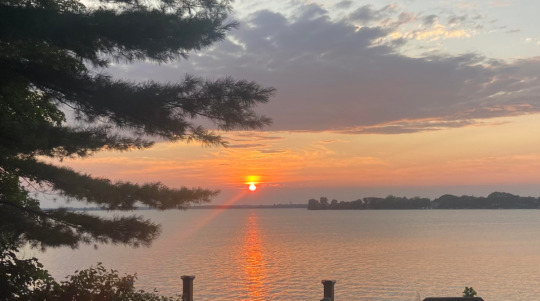
a sunset pic I took during some sacred cottage time on West Lake near Picton, ON
As the course and the semester come to a close, it feels entirely appropriate that we finish this journey off with some mildly existential thoughts about our ethics as interpreters. I think the fact that I’m also in the process of finishing up my degree has me squirreling out a bit as the cherry on top of this introspection.
While we’ve done a lot of soul-searching over this semester, I think one thing has remained, one thing is evergreen — when I think about nature, I think about serenity, peace, sanctuary. I believe that time in nature has the power and (as fantastical as it sounds) the energy to offer healing. It gives space for a quieter mind, a more peaceful soul. Even as I write these words, the stem student in me is cringing a bit - I have no concrete sources to back up these claims!!
But that points to something invaluable that this course has given me — the leeway to not focus solely on the data and the quantitative and the cold-hard-ness of science, and to instead lean into the interpretation, to focus on the feelings and think about what they mean.
I mean, yeah, I believe in science, I believe in its place, and I love what it’s given me: the knowledge and means with which to explore questions and attain answers. But in interpretation, science can’t stand alone.
I believe in art. Interpretation needs art the same way humans do. Not for some absolutely practical or functional purpose, but for an added layer, added interest, added connection to the natural wonders around us. I believe in the duality of nature and think that the point of interpretation should be to explore that push-and-pull relationship between science and art.
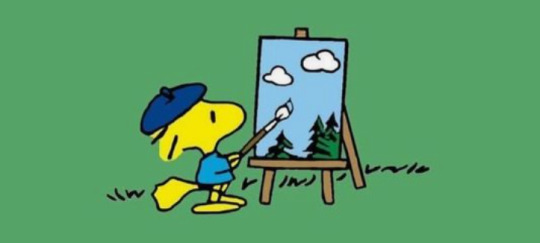
Now as for my responsibilities as an interpreter. I thought a lot about this question early in the course. In the beginning, I think I was intimidated by the idea that everyone must be pleased, must be included. And I know that dismissing the idea that “everyone should be included” can come across as harsh. But I think that I landed on the idea that it’s important to strike a balance between doing everything you can AND “staying in your lane”, as it were.
It’s hard to be everything all at once, and we can’t be. It’s valid to have the desire to accommodate every single person, but what is the cost there? What is the end product once you’ve spread yourself so thin? It doesn't mean giving up, in any sense, but instead highlighting your own abilities and lifting up others who fill in those gaps. It's about the net result, it's about interpretation as a community.
But to be an interpreter inherently puts you in a position of authority, of leadership - and that can be daunting.
So I approach this question a little differently now. Yes, I have the responsibility of providing valuable content to people in a way that respects their stories and their backpacks. I have the responsibility of putting out work that I am proud of, as to not take peoples' attention for granted. But up front, I have a responsibility that harkens back to acknowledging myself, my strengths and individuality as an interpreter.
This line of thought sparked questions not like
“how do I make my content valuable to every person?” or “how do I make sure everyone is happy and accommodated?”
but instead
“what can I realistically provide in a valuable way? which is the audience that will truly benefit from what I can offer, and how can I make sure that I am putting my focus there?”
The answers to these questions are still being sorted out, I think.
Still, I do know that I am more inclined to cater to the artistic- and abstract- inclined. I don’t necessarily see myself on the cold-hard-science side of academia. As a science student, I’ve pushed a passion for art aside in a lot of ways.
And it’s a tad cheesy, I’d admit, but this course has pushed me to think about why that is, and to imagine reintegrating art. Everything is still a little foggy, but there is a semblance of a clear path, or a few of them. Something in the realm of the visual arts, or even an increased focus on less technical writing feels like my fit.
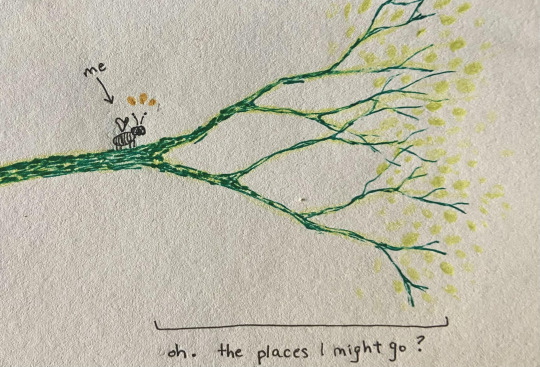
silly little doodle i did
Thinking about how I could approach nature interpretation, I’m brought back to the ideas about learning styles that we touched on earlier in the course. I mulled it over and landed on the fact that I like working alone, and need it to some extent, and I’m coming to terms with the fact that that doesn’t have to be forever. This stage is about self-discovery, for the purposes that I’ve mentioned – offering true value to the audience that would benefit the most. It’s about exploring myself as an interpreter, the things I have to offer, and giving myself time and space to do so.
But I am passionate about the intimate link between people and nature, and I care about sharing this passion with other people. And again, I think that art is a perfect realm for this sort of work. Building community is part of the art world, but so is introspection and individuality. It offers both sides of the coin: time spent alone with the craft, the creation, and time spent sharing what you discovered and made in that time.
While I’d love to have shared some really confident and concrete answers to these questions, I think the best thing I can do right now is be honest about the uncertainty, about the possibilities, and the little bits of self-assuredness that I do hold with me right now, and carrying on this journey of discovery in spite of it.
If you’ve made it this far into this post (by choice or obligation), I really truly want to say THANK YOU. This was a pretty self-centered entry and sharing all these thoughts has been cathartic, to say the least.
4 notes
·
View notes
Text
Final Post! My reflection as an interpreter
This course provided me with the opportunities to learn about various learning styles and methods of interpretation, giving me the tools to discover who I am as a nature interpreter (Hooykaas, 2024). My approach as an individual comes from the desire to evoke emotional responses through interpretation, whether that be through art or through teaching scientific concepts (Beck et al. 2018, p.44). Looking back to my second blog post, I described my ideal role as an interpreter being a professor. I still resonate with this role, but the idea of interpretation in less of a directly-academic setting has crossed my mind. I still believe that my ideology of presenting scientific information in a setting for open conversation is most suitable to me. Through this open line of communication surrounding scientific topics, it can open a listener to care about things such as plant nutrients or global warming, to lead them to caring for these topics in day-to-day life (Beck et al. 2018, p.60). In addition to interpretation through speaking, I have realised that my learning styles being tactile/visual really reflects in my art (Hooykaas, 2024). I explained my connection to art and nature interpretation previously in my blog, and I have always known that nature has inspired me to create throughout my life. My art provides me with another outlet to showcase nature interpretation in a physical way that can provoke viewers to ask questions and get curious about nature (Beck et al. 2018, p.229).
Through these two very different paths of interpretation, the responsibilities I uphold are to stay true to my passions and to state unbiased, clear information to my listeners. Staying true to my passions is important for both art and scientific interpretation. If I were to deviate from art that makes me feel fulfilled and from science that applies to concepts I care about it wouldn’t be me. This is a responsibility I have to myself as an individual, and without the passions that drive me to be curious about nature, I would have no role as an interpreter at all. Stating unbiased and clear information is especially true if I am to pursue a professorship in academia. It is a responsibility to pass on information that is factually true so that others can interpret their own opinions off it. Topics that come to mind regarding this include GMO information as well as the various methods of combating climate change. Fulfilling this responsibility can be done through constantly learning, maintaining professionalism, and developing various skill sets to be a credible interpreter (Beck et al. 2018, p.378).
The belief that I feel defines me as an interpreter is that nature is the greatest teacher in balance. When a tree falls, it creates a space for insects and small animals to burrow under, it gives life to fungi and moss, it creates an entirely new ecosystem of life through death. A quote that connects to this belief is “Often the scene interprets itself, so interpreters need not impose.” (Beck et al. 2018, p. 83). I really resonate with this quote because through observing the natural order of life, you learn so many concepts that you can apply without doing anything but taking it all in. On a more cellular level, learning about homeostasis and how plants create antioxidants to keep themselves healthy is applied to human concepts of health constantly. Being taught to eat blueberries as a kid because of their antioxidant potentials, drinking peppermint tea to soothe inflammation in the stomach, health concepts that were learned from nature. I believe that through observing the natural science of life, order can be brought to my own life, and it is a goal to share my interpretation of these instances with others.
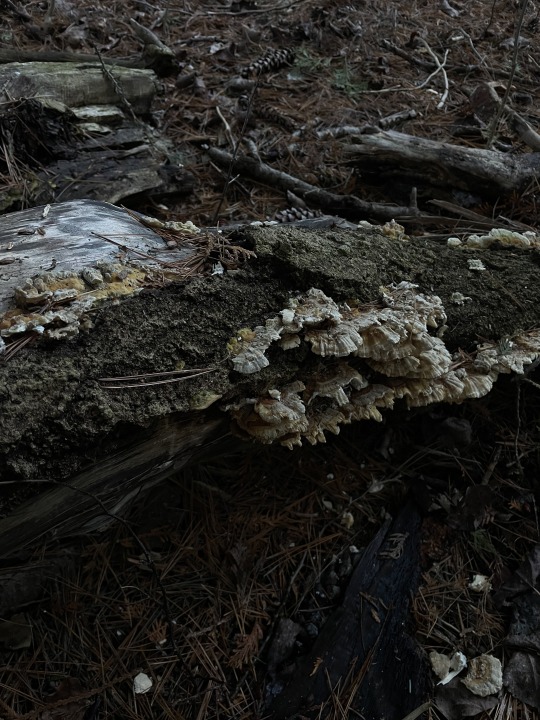
All in all, my ethics as an interpreter lay in being truthful, kind, and curious. I also want to remain aware of the privileges I hold in life, and to attribute credit to those who made my interests available to me. As an interpreter, it is important to me to share the truth with all who listen, even if that truth is ugly. I will share the truth about food processing, land colonisation, and inaccuracy of government regulations where it is due. Learning about the beauties of nature is never without the unfortunate facts that may lay underneath the information. Another area of ethics I feel very strongly about is being mindful of each person’s struggles throughout life. This concept is more for the scenario of me as a professor. I have always had the goal of creating an atmosphere built on actually processing and caring about the information learned, not regurgitating facts to fulfil a standard test. I have had many struggles out of my control throughout my university experience, and while some professors have helped, many haven’t. It is a goal of mine to never be like those people. I want to be able to help students who care about succeeding even when life deals them a bad card, something I wish that could have been done for me. This is a large basis of my ethics as an interpreter, and it drives me forward to reach my goals.
It is bitter-sweet that this is my last post, as I have never had an outlet to share my thoughts on nature in a way like this. It has been very interesting to question areas of interpretation that I had never thought of before, and it has helped me reflect on where I see myself going in the future. I look forward to seeing how all your final posts summarise you as an individual interpreter! Enjoy some photos of nature to end this blog off :)
Alleeya
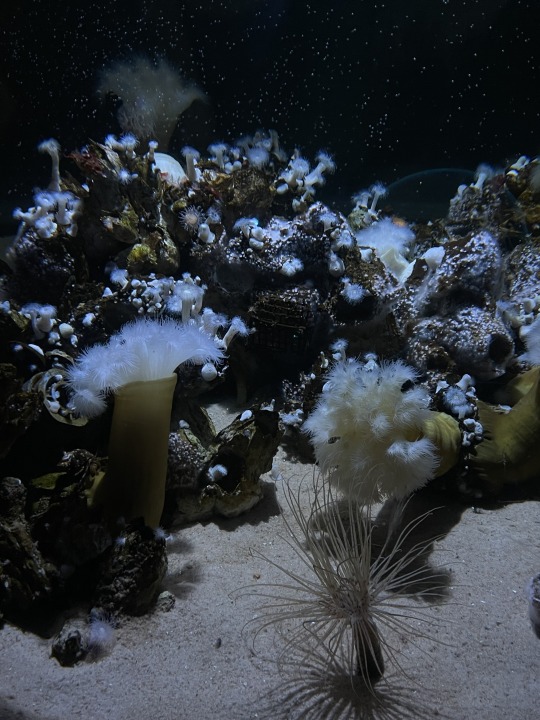

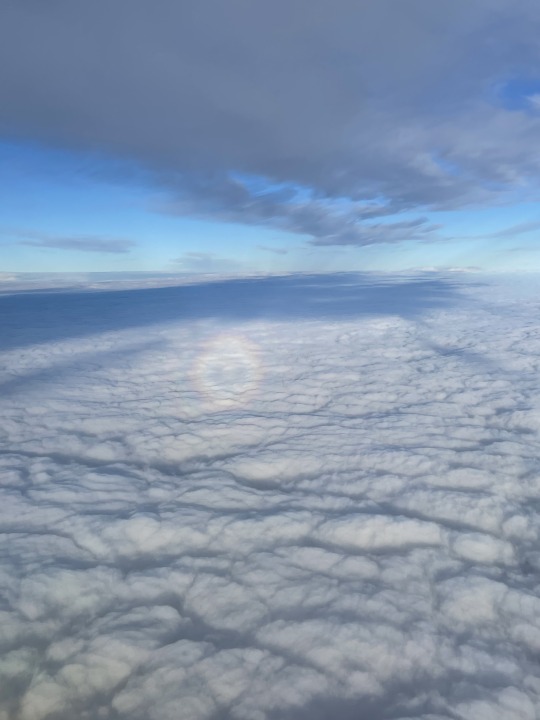
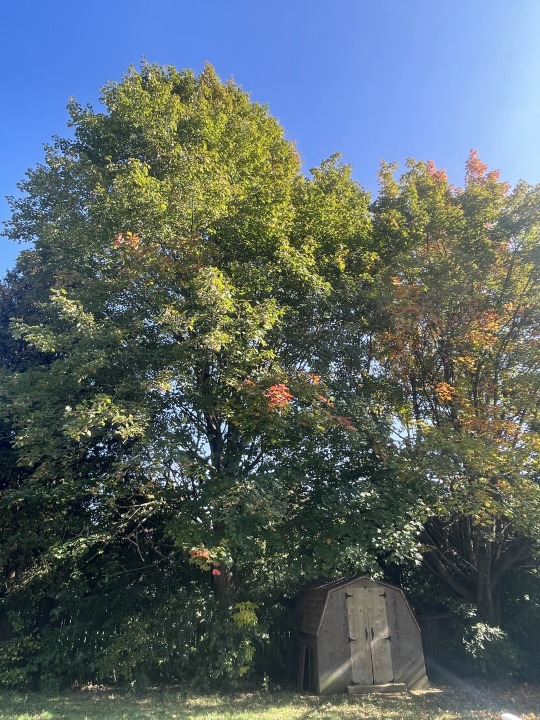
Beck, L., Cable, T. T., & Knudson, D. M. (2018). Interpreting Cultural and Natural Heritage: For a Better World. Sagamore Publishing LLC.
Hooykaas, A. (2024). Nature interpretation. https://courselink.uoguelph.ca/d2l/le/content/858004/Home
7 notes
·
View notes
Text
Hi,
I loved reading about hydras! I think you did such a good job at summarizing such a fascinating creature, and this post made me really hopeful for possible medical uses using their cells. Another animal I thought of that can regenerate are starfish. I am wondering if both of these organisms use the same methods of regeneration, or if they have any distant ancestors allowing this phenomena to occur.
It's fascinating to think that there are species that exist along side us who have mastered the art of immortality (in some cases, as you mentioned). When thinking more about medical applications, I first thought of uses in cancer research to regenerate organs that have been lost due to tumour growth. I think that could be a really cool application, however it also makes me think that these cells could possibly increase incidence of cancer due to their high-cell regeneration rates. In general, I think these organisms can harbour so many uses in science!
Thank you for teaching me about Hydra, before reading this post I had no idea this creature existed. I can definitely understand your fascination!
Alleeya
Blog 8: The head of the Hydra keeps growing back!!!
One of the biggest characteristics of living beings is the fact that they are mortal, and their time on Earth is limited. However, some organisms defy this characteristic and can obtain biological immortality where their mortality rate from aging is stable or decreasing (Bellantuono et al., 2015). This does not mean that they can live forever, as they can still die from other factors such as injury, predation, disease, etc. One of the most famous organisms exhibiting biological immortality is the genus Hydra from the phylum Cnidaria (jellyfish and anemones).
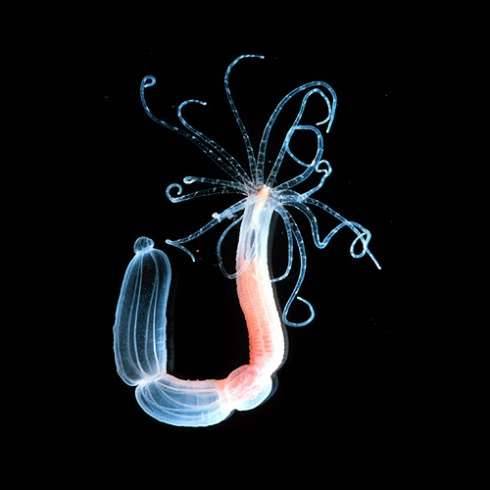
Image of a Hydra, a dragon in its own aspect
Hydras are only found in freshwater environments where they latch onto sticks and rocks and feed using their tentacles like jellyfish and anemones. They are relatively small organisms, but they are most known for their ability to regenerate anything (why they are named after the mythical creature) and live forever if unbothered (Rigby, 2019; Robitzski, 2021). This makes them one of the most fascinating aspects of nature, in my opinion.
The Hydra’s aging process, or lack thereof, was first described in a pioneering study conducted in 1998 and had not been retested until 2015 (Martínez, 1998; Schaible et al., 2015). In the 2015 study, 2,256 individuals from three different strains were maintained in a controlled environment for eight years (Martínez, 1998; Schaible et al., 2015). Both studies observed and concluded that the death rates of the individuals were low and uncoupled from age (Martínez, 1998; Schaible et al., 2015). Imagine if humans did not age at all after they reached the age of maturity. Everyone aged until 25 and then never aged further, and nobody would die of natural aging. Einstein would still be alive to this day studying the vastness of space and maybe even the darkness of oceans. That is basically how Hydras live at least without other factors leading to death considered. However, immortality is not the only fascinating aspect of these organisms.

Hydras are indeed very small or the person pictured is Goliath
Hydras are also able to regenerate their body from any part of their body (Fell, 2023; Robitzski, 2021). You can detach their heads from their body and they will regenerate within two days (Fell, 2023). Their body plans are very simple (think of a tube) and contain three separate self-renewing stem cell populations with post-mitotic cells only appearing in extremities (Siebert et al., 2019). Imagine human cells that constantly undergo mitosis also contain stem cells that allow them to regenerate any damaged tissue and organs quickly. This marvelous feature is what Hydras can accomplish in their life cycle.

"I swear every time I try to get rid of one head, two more replace it" - Hercules (sometime before I was born)
The immortality and regenerative properties of the Hydra have made them ideal candidates for research into aging stem cell regeneration by scientists (Fell, 2023). Although studies into Hydras are ongoing, much is yet to be understood about them. One such mystery would be how they are able to achieve their complex stem cell regeneration while maintaining a small and simple body plan (Siebert et al., 2019). Another mystery would be whether the ability to regenerate that is present in multicellular organisms such as Hydras, axolotls, and flatworms is a derived feature unique to these organisms or is ancestral in nature passed down from an ancient ancestral organism (Robitzski, 2021).
References
Bellantuono, A. J., Bridge, D., & Martínez, D. E. (2015). Hydra as a tractable, long-lived model system for senescence. Invertebrate Reproduction & Development, 59(sup1), 39. https://doi.org/10.1080/07924259.2014.938196
Fell, A. (2023, March 9). Using Hydra to Understand Tissue Regeneration | College of Biological Sciences. College of Biological Sciences. https://biology.ucdavis.edu/news/using-hydra-understand-tissue-regeneration
Martínez, D. E. (1998). Mortality patterns suggest lack of senescence in hydra. Experimental Gerontology, 33(3), 217–225. https://doi.org/10.1016/S0531-5565(97)00113-7
Rigby, S. (2019, August 3). Secret of the ‘immortal’ hydra’s regenerating ability uncovered - BBC Science Focus Magazine. BBC Science Focus. https://www.sciencefocus.com/news/secret-of-the-immortal-hydras-regenerating-ability-uncovered
Robitzski, D. (2021, December 13). How Hydras Regenerate Decapitated Heads. The Scientist. https://www.the-scientist.com/how-hydras-regenerate-decapitated-heads-69523
Schaible, R., Scheuerlein, A., Dańko, M. J., Gampe, J., Martínez, D. E., & Vaupel, J. W. (2015). Constant mortality and fertility over age in Hydra. Proceedings of the National Academy of Sciences of the United States of America, 112(51), 15701–15706. https://doi.org/10.1073/PNAS.1521002112/-/DCSUPPLEMENTAL
Siebert, S., Farrell, J. A., Cazet, J. F., Abeykoon, Y., Primack, A. S., Schnitzler, C. E., & Juliano, C. E. (2019). Stem cell differentiation trajectories in Hydra resolved at single-cell resolution. Science, 365(6451). https://doi.org/10.1126/SCIENCE.AAV9314/SUPPL_FILE/AAV9314_SIEBERT_SM.PDF
4 notes
·
View notes
Text
Plant chemicals are so cool! Unit 9
The most amazing thing I know about nature is the ability of plants to produce compounds that serve incredible health benefits to humans. I think it is other-worldly that the flora that has existed alongside humans for so many years can provide us with so many cures to various ailments. Getting personal, I have a very unfortunate family history containing cancer, diabetes, and immune deficiencies that has taken a lot from me. These devastating occurrences have made me all-too-aware of the impacts that lifestyle and food have on human health, and in many ways being in science does not ease my anxieties. However; learning about plant secondary metabolites that serve as phytonutrients in the human body has made me hopeful and inspired to learn more, not just for interest, but to serve my health as well. Buckle up for many science terms and lots of plant facts that I have stored in my brain through my academic career!
Throughout my summary on plant phytonutrients (plant compounds that serve proven health benefits in humans), I will strive to present this information as a whole by connecting plants to human health to satisfy some of Tilden's Principle's of Interpretation (Beck et al. 2018, p. 84). Did you know that the colour of the fruits and vegetables you eat actually correlate to their nutrition? The different pigments produced in plants, such as your orange carrots and red peppers, are caused by secondary metabolites. Orange colouring is caused by the production of beta-carotene, this is then utilized by our body to make vitamin A, making it crucial to our health because we cannot synthesize this on our own. Colours such as purple and dark reds are caused by anthocyanins, these are compounds that aid in our bodies ability to fight tumour producing cells. Actually many plant metabolites, such as glucosinolates from Broccoli, aid in tumour-suppression and have anti-inflammatory properties. Spices such as turmeric have been used for centuries as a treatment for inflammation and diabetes due to the compound 'curcumin'. This bioactive molecule has been increasingly applied to modern medical studies due to its efficacy in improving glucose regulation and suppressing various cancer cell formations.
I won't add in too much more, as I know that was a lot of information. One more area I do want to touch on is the use of genetic engineering to increase yields/improve taste, but decreasing health benefits in the process. An example of this is removing the class of compounds "cucurbitacins" from common cucumbers due to the bitter taste it gives them. These compounds provide various health benefits such as anti-inflammatory and anti-cancer effects, and through the removal of these it has made cucumbers far less beneficial to our health.
I believe much of what our bodies need is provided by nature, not to say I disprove of modern medicine in any way, but our values in food as a society has been greatly impacted due to prices/availability. I want to work plants to improve nutritional concentrations of food, and helping humans be healthier through what has already been granted to us by nature.
Thanks for reading!
Alleeya
Beck, L., Cable, T. T., & Knudson, D. M. (2018). Interpreting Cultural and Natural Heritage: For A Better World. Sagamore Publishing.
7 notes
·
View notes
Text
Hi Natalie,
I really related to your post, especially about your points about nature resonating with human experience. I have always found it so interesting that no matter how far back in history you look, all parts of the world have their own variation of music production. I believe music connects nature to people, but also shows an innate human connection that we each share! I enjoyed how descriptive you were with the sounds of nature, and I have been interested in reading everyones posts with the sounds they first think of when connecting nature to music.
Also, to answer your question about which of nature or music is more powerful in my life, I would have to say music! Although nature is the basis of my academics and my hobbies, music can instantly dictate my mood, outfits, and set my tone for the day. Because of this, I would have to say music is a more powerful force in my daily life. But the easy answer is that the two go hand in hand, I mean what's better than listening to your favorite songs while hiking on a sunny day!
Alleeya
Music in Nature, Nature in Music
Hi everyone!
Welcome back to another week of blogging :)
While contemplating the relationship between music and nature, I feel that there is a profound interconnectedness between these two realms that provokes a certain feeling or emotion or a coexistence of both. At their core, both music and nature embody fundamental elements of existence, evoking emotions, thoughts, and sensations that resonate deeply within the human experience. Firstly, I believe music resides in nature in many ways. From the gentle rustle of leaves in the wind to the rhythmic pattern of raindrops, from the harmonious chirping of birds to the powerful roar of thunderstorms, nature offers an endless amount of sonic experiences. Conversely, I believe nature resides in music in more subtle and emotional ways. Through symbolism and metaphors, I believe nature is used in music to convey deeper meanings and themes such as the blossoming of a flower to represent the emergence of new life or the crashing of waves at a beach to represent the rhythm of life. I believe many songwriters and musicians use nature as a source for their music and use natural landscapes as inspiration for their work. Simultaneously, I believe both nature and music work together to create a sense of emotion and feeling within humans and the most amazing thing about them both, is that the way humans experience them is never the same for two people...and that is the beauty of it!
In the textbook, songs are described as having the ability to, “Work in several ways: first, to get words and facts to stick in the minds of listeners; second, to paint a picture in the imagination; and third, to reach the emotions of the listener. Some songs evoke strong emotions, which makes them memorable” (Beck, 2018). I believe this to be so true as songs have the capacity to paint vivid pictures in the imagination, transporting listeners to different places, times, and emotional landscapes and when I hear specific songs, they take me back to a certain place or memory as if I am physically there. In my life, a specific song that provokes these strong feelings and emotions and takes me back to a natural landscape is “Coastline” by Hollow Coves. Listening to Coastline takes me back to my favourite summers on the beach where I grew up going to and reminds me of the simple joys of life and how music can make small moments that much more memorable. Coastline provokes feelings of calmness, serenity and peacefulness and brings back memories of the waves crashing at the beach, the smell of fresh summer air and the beauty of slowing down and being where your toes are. I think that’s the most beautiful thing about nature and music.. they both simultaneously connect us to the world around us, offering a gateway to deeper realms of understanding and connection and allow us to fully appreciate the beauty of where we are.

To end this post, I would love to know from you: What songs take you back to a natural landscape and provoke these feelings and emotions? How are nature and music interconnected within your life? Do you think one is a more powerful force in your life as opposed to the other?
Thanks for listening and I’m excited to hear back from you!
Natalie :)
Beck, L., Cable, T.T., & Knudson, D.M. (2018). Interpreting cultural and natural heritage: for a better world. Sagamore Publishing.
1 note
·
View note
Text
Music in all Walks of Life
Music is found in the mourning dove call that reminds us of our childhood summer mornings. I hear it in the howl of the wind through the trees, the crickets late at night, and in the ocean waves lapping at the shore. Music is subjective to all people, and as stated in the textbook "Some songs evoke strong emotions, which makes them memorable" (Beck et al. 2018). My personal definition of music would be any sound that invokes feeling and a sense of sway within you, and because of this I feel that music is found everywhere in nature. Natural music also plays a large part in nature interpretation, bug and bird calls make handy identification methods for those who listen.
The sounds of nature is also incorporated into various human musical creations, the first one coming to mind is the song 'Good Days' by SZA. She adds the sounds of common bird calls, making the introduction to the song feel like waking up on a summer morning. These sounds in addition to a shimmering chime melody really places the listener into the feeling of a beautiful, 'good day'. The use of nature in this song successfully achieved the ability of painting a picture in the imagination of the listener and evoking emotion (Beck et al. 2018). Another great song that doesn't necessarily add in nature sounds, but truly places you in the feeling of walking through a beautiful field on a summer day is the song "OH! TENGO SUERTE" by Masayoshi Takanaka. This song has few lyrics, but the light beat, use of charms, and 'whiny' higher-pitch guitar almost mimics what you'd expect a birds voice to sound like, if that makes any sense at all. This is a song that always makes me visualize nature, summer, and being on a beach no matter my mood or setting. I highly recommend giving it a try!
A song that immediately puts me in a natural landscape is called "Backseat Serenade" by the band All Time Low. Although the song itself has nothing to do with nature, it brings me back to when I was 15 with my two best friends riding horses through fields. We met through horseback riding and have been best friends ever since, we used to listen to this song and gallop through the fields/trails together in the summer. No matter the weather or setting I am in, when I hear this song it places me in a sunny bright July day, feeling the wind on my face and happiness in my heart. I am so thankful for music's ability to place you back in memories, and allowing me to relive the happy days of my teenage youth.

Thank you for reading, looking forward to seeing what songs impact you :)
Alleeya
Beck, L., Cable, T. T., & Knudson, D. M. (2018). Interpreting Cultural and Natural Heritage: For a Better World. Sagamore Publishing LLC.
0 notes
Text
Unit 6
Today I will be analyzing the quote;
"There is no peculiar merit in ancient things, but there is merit in integrity, and integrity entails the keeping together of the parts of any whole, and if these parts are scattered throughout time, then the maintenance of integrity entails a knowledge, a memory, of ancient things. …. To think, feel or act as though the past is done with, is equivalent to believing that a railway station through which our train has just passed, only existed for as long as our train was in it." (Hyams, 2018).
This quote brings light to the importance of history in our every day life, reminding me of every historical sight I have come across through my travels. Learning about past mistakes and triumphs of humans is what propels evolution forward, and it is one of the most important aspects of visiting historical monuments.
Another lens I can read this quote through is that of nature, specifically animals like horseshoe crabs and reptiles. These animals that have existed for centuries give us a view into history and the environments that they had to overcome. Horseshoe crabs specifically make me think of the area of the quote that states "To think, feel or act as though the past is done with, is equivalent to believing that a railway station through which our train has just passed, only existed for as long as our train was in it.". Horseshoe crabs have been around for over 400 million years, yet still serve of great importance to humans due to the medical applications using their blood. These crabs have existed long before humans, yet provide us with so much. This natural bridge of the past to the present reminds me of how connected life is, and how long various 'train stations' have existed before humans even came about.
Although this interpretation may be more of an abstract one, I enjoy applying nature to this quote analyses. I am reminded of the various medicinal plants that have been around for millennia, curing human ailments before the creation of modern medicine. It honestly makes me a bit angry to think about how many natural cures we were granted, and how far the pharmaceutical industries have strayed from them. Not that I disagree with modern medicine, but I believe many human health problems such as high/low blood pressure, fatigue, and chronic inflammation can be greatly aided by the use of natural medicine. Utilizing the herbal teachings of our ancestors throughout history is an area of connection I wish we as a community would take part of more.
Thanks for reading,
Alleeya
Beck, L., Cable, T. T., & Knudson, D. M. (2018). Interpreting Cultural and Natural Heritage: For a Better World. Sagamore Publishing LLC.
1 note
·
View note
Text
Hey,
Reading your post put into words exactly how I feel about this especially warm February. Enjoying the 16 degree day on the 9th, walking through Toronto with my jacket open without the wind freezing me was incredible; until I remembered that it is in fact February. I think about how February used to be one of the strongest and coldest winter months, how I would dread it every year. I have never enjoyed winter much, but I too have been constantly thinking about how our biodiversity will suffer.
I have been thinking about the birds in particular, I remember learning that the birds migrate based off environmental cues. When they return too early, their native food sources are not yet in bloom or the ground is too hard to harvest insects. Without winter cues sending them south, they can also get caught in cold-snaps, endangering themselves and their young. I hate to add to the upsetting truths about climate change, but it is nice to have someone who shares these fears as I feel many have come to ignore and accept it. I would do anything for a cold February again, for the sake of our natural environment.
I appreciate you bringing light to this topic, I hope we can see change in our future.
Alleeya
Warmer Winters Ahead
This week, we’ve experienced some fantastic weather in the Guelph area, and it has been enjoyed by many. The sun has been out, there are no buckets of snow being dumped on us, the birds are chirping, and even some bugs are reappearing. Personally, I enjoy being able to open up the windows in my apartment to air everything out, letting the fresh air in without turning the space into a walk-in freezer. It feels as if we are already deep into April given the weather being so springlike, however we aren’t even halfway into February. Normally, I would be the biggest supporter of warm weather, as snow is not my biggest fan, nor am I a fan of it. However, between this class ENVS*3000 (Nature Interpretation), and a course I took last term ENVS*3010 (Climate Change Biology), it has impacted my way of thinking dramatically, and I am growing more concerned about the world around us and how nature will change due to the effects of climate change.
In 2023, it was determined we would experience El Nino, which brings forth warmer, wet weather that could also bring more extreme weather patterns with it (ICL 2023). Its opposite, La Nina, does not commonly impact this part of North America, however the two tend to swing back and forth (ICL 2023). Together, they interrupt the natural atmospheric weather patterns and seem to only become more aggressive as the effects of climate change continue to grow more apparent (ICL 2023).
While all these changes in weather and temperature are explainable through science, the impacts it will have on our environment are still unknown, which makes me very fearful of what our natural spaces will look like in the future. For us to have such a green winter this year, it makes one curious about how this will impact the health and survival of all of those found within our green spaces. How does this type of weather disrupt their mating season? Will the species of plants still blossom and sprout when needed? Would they be able to survive the cold fronts that unexpectedly appear?
While this seems like an odd thing to think about, I am concerned about what nature will look like in just 10 or 20 years from now. What native species will no longer be able to live here? What will the forests look like years from now if events such as drought or wildfires become the new normal? Will we still have winters with the buckets of snow that we all loved as kids? As aspiring nature interpreters, I think it is our due diligence to be asking the big questions about the nature we find around us. I think it is important to live in the present, and enjoy what we have, but also look to the future and protect the environment for generations of nature interpreters to come.
[ICL] Imperial College London. (2023). What is El Niño and how is it influenced by climate change? Accessed February 10, 2024. .https://www.imperial.ac.uk/grantham/publications/climate-change-faqs/what-is-el-nino/
9 notes
·
View notes
Text
Me and Ms. Ocean - Unit 5
At first, the open-ended prompt for this week's unit made me overwhelmed. After all, nature is such a vast topic that expands from the smallest microorganisms all the way to mount Everest! Getting bogged in the details of which exact plant or scenario to write about made me stressed, until I zoomed out and realized the most obvious choice of all; the ocean.
I have always been drawn to the ocean/bodies of water and the organisms that inhabit it. My dream is to one day live in a coastal area near a tide-pool, I imagine myself waking up each morning when the tide is out, looking at all the different creatures hiding in the rocks. I would learn about each and every-one I'd see, asking various processing questions to myself and challenging my knowledge on ecology (Beck et al. 2018, p. 207). Providing myself with questions such as "What factors influence the plants that grow on these rocks, how do they adapt to such low and high concentrations of water?" stimulates me to interpret further and apply my knowledge (Beck et al. 2018, p. 207). Although I know this far in the future, my fascination with tide pools also presents me with an opportunity to share my knowledge with others. I hadn't thought about the possibility of giving a nature walk along a tide-pool, but within the textbook the "Water trails" section provided me with some insight on how to make this possible (Beck et al. 2018, p. 291). Through understanding of tide heights after thorough monitoring, it could be possible to take a small group people to go exploring the flora and fauna hidden in the shallow tides. Utilizing my knowledge of the local species, I can share it with others and provide an inside into an otherwise hidden area of our coastal shores.
The ocean also greatly inspires my art, I know there is a risk of overlapping with last weeks content but I can't help it! Through exploring the tide pools of Panama, swimming with schools of fish in the Dominican Republic, and viewing the amazing species at Toronto's Ripley's aquarium, sea life never fails to inspire me. The bright colours and serenity associated with water makes me feel like I am looking into another world so far from my own. Cephalopod species specifically fascinate me due to their alien appearance and colouring. How lucky we are to exist alongside them!

A cool interpretation approach could be a guided painting class alongside information about the subjects of interest. This would be such a fun way for me to display my knowledge of both art and nature in an engaging way. Would an interpretation art class be something you'd ever try? Let me know!
Thanks for reading,
Alleeya
Beck, L., Cable, T. T., & Knudson, D. M. (2018). Interpreting Cultural and Natural Heritage for a Better World (1st ed.). Sagamore Publishing. https://www.sagamorepub.com/products/interpreting-cultural-and-natural-heritage-better-world
0 notes
Text
Hi Yassin,
I really enjoyed reading your post! You have a very beautiful way of writing, I love the imagery you used when speaking about the gift of beauty. Hearing about your interpretation of nature through art was really interesting, using photography as a means to capture a moment of connection in nature is a really good way to frame it. Personally, I use nature to inspire paintings and drawings, so hearing about your interpretation through photography and storytelling is an interesting view into other medias of art.
Another aspect I enjoyed in your post was how you described the Montreal botanic gardens. The living gallery outlook is one I really resonate with, the Arboretum in the spring makes me feel that same way. Seeing all the different colours and species existing in this small slice of Guelph does give the feeling of a walk through a large collection of art.
I look forward to reading your future posts!
Alleeya
Unit#4
Hey there, fellow nature wanderers and art enthusiasts,
Unit 4's journey into the fusion of art and environmental interpretation has me reflecting on a recent stroll through Montreal's Botanical Gardens. The vibrant hues, delicate textures, and tranquil landscapes felt like walking through a living gallery, where every turn presented a new exhibit crafted by nature's own hand.
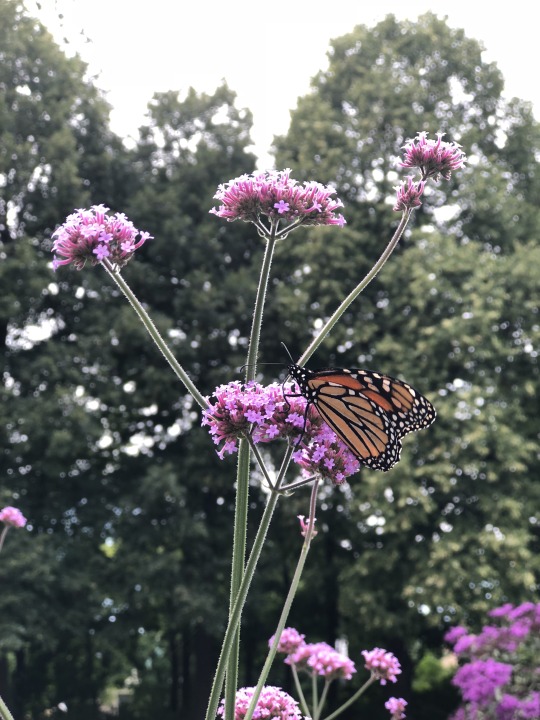
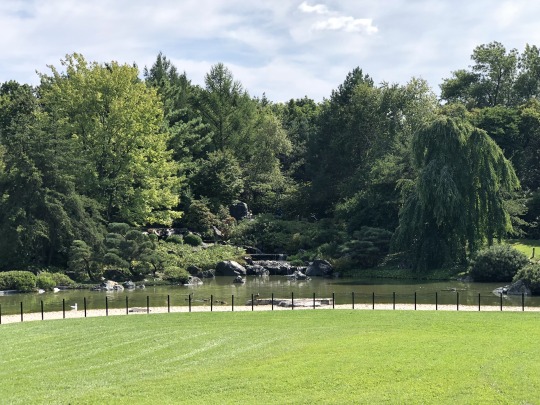
In the dappled light beneath the trees, I realized that my role in interpreting nature through art isn't about being an expert artist. It involves being a sharp observer and a conduit for the beauty all around us. In my opinion, the gift of beauty lies not only in the vivid hues of a butterfly perched on a bloom or in the tranquil view of a pond surrounded by thick vegetation, but also in the way light and shadow interact and the cycle of life takes place in these peaceful corners of the world.
Art, in its essence, is about evoking emotion and thought. When I snapped these photos, it wasn't just about capturing a pretty scene; it was about preserving a moment of connection with the world around me a fleeting conversation between the earth and its admirers.
As I ventured through the gardens, the lessons from our course echoed with each step. The paintings of the Group of Seven, referenced in our materials, use art to communicate the spirit of Canada's landscapes (Burtch, n.d.). Similarly, each image I took holds a story, not of grandeur, but of simple, unspoken truths that bind us to this planet.
Risk and interpretive planning, themes we've explored, are about balance (Beck & Cable, 2011). It's about presenting nature's art in a way that is both safe and invigorating, allowing others to experience the thrill of discovery without harm. The Lemon Theory from our readings suggests that we must be mindful of the chain of decisions and events that could culminate in an accident (Beck & Cable, 2011). In nature interpretation, it's our job to manage these risks, ensuring that the story of nature's art is told safely and resonates deeply.
In these photographs, I see more than just scenery; I see a canvas where every creature, every plant, every drop of water plays a part in a larger narrative. And who am I to interpret this art? I am a student, a storyteller, and an appreciator of the intricate artistry that nature displays.
Beauty is a gift that everybody may appreciate, perceive, and understand. It serves as a reminder that art exists everywhere, even in Montreal's botanical gardens, and is just waiting for us to tell its story. It is not limited to galleries and museums.
Until next time,
Yassin.
References:
Beck, L., Cable, T. T., & Knudson, D. M. (2018). Interpreting Cultural and Natural Heritage for a Better World (1st ed.). Sagamore Publishing. https://www.sagamorepub.com/products/interpreting-cultural-and-natural-heritage-better-world
4 notes
·
View notes
Text
The lovely muse; nature
I think most of us can remember being a kid and drawing a big flower with five pink petals with a sun in the corner of the page. This common experience goes to show that nature is the purest form of inspiration, the gift of beauty giving us the urge to recreate (Beck et al. 2018, p. 85) . Nature has continued to inspire me far past my days of drawing bright blue skies with crayon-scribble grass, and it remains my muse for the art I create today.
Plants and sea life have been my main focus of interpretation, I love to apply nature to obscure concepts and play with surrealism. I believe my artistic interpretation of art centres around the gift of provocation, I want to create art that makes people apply their own meanings to it (Beck et al. 2018, p. 85). A personal favourite painting I have made is titled “Keeping you at arms reach”, where I incorporate hands with a venus fly trap. The inspiration behind this was the long stem that venus fly traps grow for their floral organs, far away from their lower chomping mouths. These flowers are kept high, as to not capture any beneficial pollinating insects, ensuring their chance of reproduction. This fact inspired me to think of human relationships and keeping people away from the painful realities deeper down, the things that could drive others away. I feel that this example perfectly encapsulates how I use art to interpret nature, to use an organism with no human expression to showcase human ideologies.

I believe that using nature as an inspiration for art drives me to be a better interpreter. When a plant such as a pitcher plant inspires me, I learn more about it and explore reasons behind certain characteristics. This curiosity opens new doors to learning, and through this I have more information added to my interpretation toolbag. Having broad ranges of knowledge also makes me more adaptable to various groups of people! Kid that asks how mushrooms grow out of trees? I have learned about that! Adult who wonders if the bird they’re seeing is a crow or a raven? I can give them an annoying amount of information!
Associating the tangible elements of my surroundings to attach a story/meaning through art makes me happy and aids in my ability to provide interpretation to those around me (Beck et al. 2018, p. 88). Although I do associate my own specific meanings to my art, I rarely share those meanings to others. I prefer to hear what they believe the concept to be, and it makes me so excited when people interpret my art in a way I never would have thought of myself. Thank you for reading, I wanted to leave off with a recent painting I did and possibly hear some of your interpretations!

Beck, L., Cable, T.T., & Knudson, D.M. (2018). Interpreting cultural and natural heritage for a better world. Sagamore Publishing LLC.
3 notes
·
View notes
Text
Hey, first off I want to say that I am so sorry for the sudden loss of your friend. The ability to connect something so raw to this material is very brave and I appreciated reading your outlook on privilege. I grew up in Burlington, so I very much understand what you mean about the tax bracket of the general area. Much like you, I was never in the high ends of things but was always fed and comfortable. I also recognize the privilege of where I grew up and how lucky I was to have a safe childhood, as I know many haven't had that experience.
You are very right about the fact that privilege will never save you, I am no stranger to losing loved ones as well. Pouring myself into nature and absorbing all of the information I can has always brought me solace within the chaotic world. I believe these hardships can make for better interpretation of nature and the world around us due to the exposure of harsh realities. You really think more about the little things in grief (as upsetting as it is), always coming out a slightly new person with different outlooks.
I hope my response wasn't too grim! I respect your honesty and bluntness and felt that you could understand what I mean.
Looking forward to reading your future posts, Alleeya.
no amount of privilege will save your life.
This week’s topic is by no means light, and I’m not going to make it any lighter, so my apologies in advance.
Nature is all around us – it’s not only four hours north with no cell reception, but it’s also the tree growing in your backyard, the flowers outside your favourite coffee shop, and even the spiders you’re trying to kill on your ceiling. Nature is everywhere if you tune in to look, but so is privilege.
What is privilege? My current definition of privilege is an abstract currency knowingly or unknowingly used throughout one’s life to gain an increased advantage over others. I will admit that I am no stranger to privilege. I was born into a white middle-class family and sent to a private elementary school for eight years. I grew up in Oakville, which (if you know, you know) trust me, you can tell by the houses – look it up. In high school, we used to joke that you could tell the difference between the students’ and teachers’ cars in the parking lot because all the teachers had your typical Hondas or Nissans, while the students would show up in daddy’s Ferrari or Porsche. From a young age, my parents always taught my sister and me that even though we weren’t in the bracket of buying a Ferrari, life-wise, we would be relatively okay because of this privilege. To be honest, that never sat well with me, and it still doesn’t to this day (but a story for another time).
The example used in this week’s content was about the story of the Lake Timiskaming canoeing tragedy. These boys went to a prestigious school; they had the best equipment – they were privileged, and yet their canoes still sank, killing thirteen people. Nature gave us a haunting reminder in 1978 that it is a privilege to experience it.
In 2023, nature horribly reminded me of this lesson when I learned that my good friend and roommate had been killed on her way to work. She was 22. She had everything going for her: a fantastic job while finishing university, an amazing group of friends, and even an amazing family. She had the privilege of this incredible and daring life she lived (that I can’t and won’t fit in this post), yet it still couldn’t save her life.

Me (left) and Abbey (right).
Many people take nature (and life) for granted. As a nature interpreter, the most important lesson to help teach others is when we interpret and enjoy nature, we must be careful to respect nature and who we are in nature, because no amount of privilege will save your life.
3 notes
·
View notes
Text
Privilege and Nature Interpretation
Being a first generation Canadian citizen born from two parents that grew up in oppressed countries has made me aware of my privilege. Hearing about the bombings my dad endured as a child in Palestine and my mother's struggles living through the Soviet era in Ukraine, made me realize what a safe life I live. These factors are extremely important to my definition of privilege, as I have grown up knowing about how little others have and how much of life is simply being born lucky.
My personal definition of privilege is having the ability to live freely, safely, and to have the time and money to pursue interests that you are passionate about. While this may seem like standard living, many do not have the capacity to pursue passions due to money/time/physical constraints. It is a privilege to spend my evening painting instead of needing to pick up extra shifts, and to even have access to the materials I need. Living safely, whether that be in your home, city, or mind, is also another privilege that I think about consistently due to my parents upbringing. Hearing the crazy stories of my parents' childhoods, without having to endure any of the risk to go through those hardships myself is another recognition of this.
The textbook mentions that interpretation is a human requirement to sustain a way of life, culture, and skills (Beck et al. 2018). I believe this connects my definition of privilege to nature interpretation. Through living safely and freely, you gain the ability to pass on historical and cultural information to those around you in an educational manner. Learning about Palestinian, Ukrainian, and Canadian culture has given me lenses that many have not seen through. I love to share my parents experiences with others, which connects me to to the quote "Interpretation is a mission-based approach to communication aimed at provoking in audiences the discovery of personal meaning and the forging of personal connections with things, places, people and concepts'' (Beck et al. 2018).
Although I have a lot of tragedy in my culture, I have many beautiful traditions, foods, and stories that I share with others. I believe my background makes me a better interpreter due to my ability to connect to a wider audience and share stories of various origins. Having the freedom to take interest in the native flora and fauna of Canada on land that does not belong to me is another area of privilege I recognize.
To summarise my points, privilege plays large roles in nature interpretation. Whether it be the opportunity to take time out of your day to join a nature walk, or the freedom to receive historical interpretation without being subjected to risk. Each person’s individual experiences and the way they are born make up their concept and practice of privilege.
This was definitely a more difficult topic to write about, it is always hard to dissect sensitive aspects like this one in an objective way. I look forward to reading other people’s interpretation of privilege, thank you for reading!
Beck, L., Cable, T.T., & Knudson, D.M. (2018). Interpreting cultural and natural heritage for a better world. Sagamore Publishing LLC.
1 note
·
View note
Text
Hey, I enjoyed reading your post! I found it very interesting that you took a different approach than many of the other posts I read. Coming from a mentality of education about environmental issues to raise awareness in a hands-on manner is very important. I personally would love to learn more about bioremediation and ways we can help the environment through nature, using our native species. I have learned about plants such as poplar trees and sunflowers being used for effective soil remediation, but I am not sure if these methods are being widely applied yet. I am wondering if you know of any specific remediation tactics being used around Ontario, just out of interest :)
This environmentalist outlook is one that others would shy away from due to some of the very sad facts about our environment today. I like that you mention educating people about sustainability and keeping a healthy ecosystem, I don't think these aspects are taught nearly enough. As you mentioned, a national park would be the perfect place for this, having people who are interested in nature and willing to learn about ways to help!
I appreciate you and your passion for educating people about the upsetting realities of nature, as you will be someone who helps bring change!
Ideal Interpretation
Through the textbook readings my view of interpreters not just through an environmental lens but as a whole has changed. Where previously when I heard of an interpreter, I would’ve thought of a person who relays information in a different language, and specifically an environmental interpreter as Someone similar to a teacher. Now when I see or hear the word interpreter I now think of a person, similar to a guide that helps people experience through as many facets and senses what something has to offer.
My ideal role as an interpreter would be to help people experience the environment now. While also making people aware of the importance of the environment, its ecosystem and all its components, as well as the ways they can help sustain it for future use both individually and as a community. I guess I would say the role I envision would be somewhat similar to a sustainable environmental interpreter. Combining some aspects of a sustainable systems and remediation initiatives to help heal and nurture a healthier long-lasting environment while also allowing the enjoyment of the environment currently, in the present without further harming it.
Location wise for my role as my perfect interpreter job I imagine it would be in an environmental location where there is a need to bring awareness. Maybe somewhere like Alberta where Caribou populations are on the decline and at times extirpated. Or maybe in British Columbia giving guided interpretation in the Boreal Forest while also making visitors aware of the decline in forests and ecosystem diversity due to deforestation. For these types of areas or scenarios I would imagine that working in or for a national park would be an ideal setting. Doing do would allow me to interpret to a wide audience of visitors for the park while also managing somehow to incorporate protection of these environmental amenities in Canada. Depending on the position it may be easier to protect not only specific national parks and surrounding areas, but diversity and species abundances as well.
Tools I imagine I would need to reach my idealistic interpreter position would of course be this class. Through ENVS 3000 Nature Interpretation, I would gain hands on experience for interpreting nature a wide audience and a variety of audience demographics. First through blog posts which let me practice writing for academic audiences outside of a formal writing setting. A rather welcomed change of pace considering all the academic and scientific papers I’m sure many fellow students had also had to write. And second through the two podcasts which are targeted to children, an audience of a lower comprehension level. And adults, an audience of a possibly similar comprehension level to academics but who are less informed. As I continue on my education and Co-op through schooling, I imagine I will also be able to pick up a variety of other environmental specific skills that will allow me to become a better nature interpreter and environmental scientist. I will also be able to build upon my interpretation skills and add new viewpoints and knowledge, reshaping my opinions.
2 notes
·
View notes
Text
My role as an interpreter
When first thinking about my ideal role as an environmental interpreter, I pictured the classic 'nature walk' lecture format. Thinking twice, I realized that this is not ideal to me, and instead this is the only version I have formally come to experience.
The more I questioned how I wanted to portray myself as an interpreter, the more I arrived at the same conclusion; a professor. Although this is my career goal, I believe that a professor can very well be considered an environmental interpreter. Having an audience that is interested in the material I am teaching and wanting to ask questions is my ideal setting. I love having conversation that is challenging and engaging. I want to ask my audience questions and watch them piece their knowledge together, I believe this gives the listener a sense of accomplishment and encourages the curiosity required to learn.
I have learned that I am a tactile/auditory learner that needs lots of engagement to stay interested in the subject at hand, so I would hate for my lectures to be bland and boring. Ideally I'd be teaching about plant use and nutrition, so I would enjoy bringing in the plant I am speaking about to have a hands-on approach. To add engagement, I would teach about native edible flora, perhaps even making an assignment to forage as if you are in a survival situation (Zombie apocalypse could be cool!). I would also love to add a lab portion where students can really see their knowledge apply to real life, I feel this would add another layer of understanding. To me, being a professor doesn't mean in-class only, and I could see myself bringing in the classical nature walk format as well!
The idea of teaching about plant science makes me very happy and brings out my passion for nature. I know that becoming a professor is a very long and hard road ahead of me, but I believe I have the people and presenting skills to help me reach that goal. Being able to provide my interpretation/knowledge of nature in a way that inspires people is a dream to me. Not only would this be a fulfilling job, but it would be cathartic to create a learning environment that I had always wished for in my academic career. Creating a setting that is hands-on, open to discussion, real-world applicable, and free of standardized testing would be my goal as an environmental interpreter.
Thank you for listening, I look forward to reading about all of your ideals for interpretation!
1 note
·
View note
Text
Nature and Her Lovely Distractions
Ever since I was young, nature has been a large distraction for me. I remember being in the middle of a soccer game at 8 years old and stopping to lay on the field and pick dandelions instead. To this day, in each of my classes I force myself to sit far from the windows because I get distracted by the birds and the plants I see, trying to name all the species I know. Through these distractions my curiosity has grown, leading me to my major in Biological sciences with special interest in plant science. I am forever grateful for each-and-every-one of these happy diversions, as they have made me who I am today.
Due to my natural interest in my surrounding flora and fauna, I would have to say I developed my own "sense of place" in nature. As described in the textbook, an interpreter helps others apply knowledge and significance to a particular location or area of nature (Beck et al. 2018). I have always enjoyed questioning the "why does that grow that way?" or "How could nature produce that?" and searching for an answer to these questions, in this way I have been my own interpreter for some time.
However, I cannot take all the credit! My mother has always given me the blessing of travel, and as a kid I hated visiting every castle and church in new places, not seeing the significance of it. Now reflecting, my mom was providing me with her interpretations and knowledge of so many monuments and sharing her admiration for historical buildings. Now that I have grown, I try to visit every cool church/castle/monument I see on vacation to appreciate the history and detail of these architectural masterpieces. Most recently, my family visited Panama and saw some beautiful places.


Although I truly appreciate my mom's interests in historically significant destinations, my true interest will always lay in the natural aspects of the world. I love to look at different plant species and the details in their leaves, then try to guess what biological function their development has served them! I always do research after to prove myself right, I use nature as a never-ending puzzle of sorts. While some find nature painfully boring, I think it's the most interesting part of our world. I love to educate my friends and tell them cool facts I know when certain topics come up (I guess this class was made for me). My place in nature has always been as a wide-eyed observer, just happy to see the process unfold.
Thank you for reading! Enjoy some photos of cool little guys I found exploring Panama :)




Beck, L., Cable, T.T., & Knudson, D.M. (2018). Interpreting cultural and natural heritage for a better world. Sagamore Publishing LLC.
7 notes
·
View notes